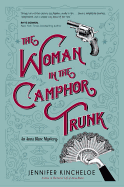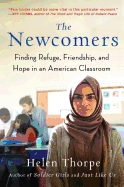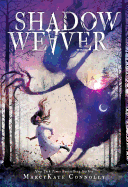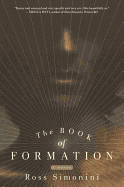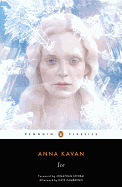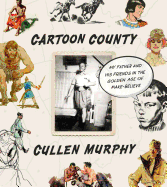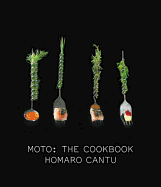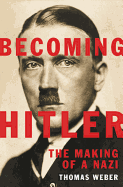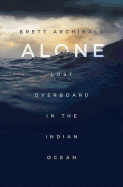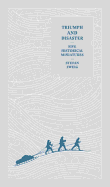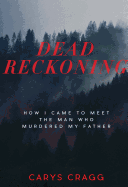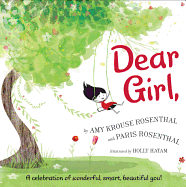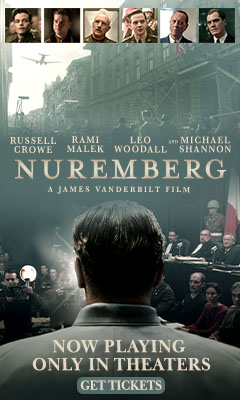Tuesday, January 2, 2018
"When you can't find someone to follow, you have to find a way to lead by example." 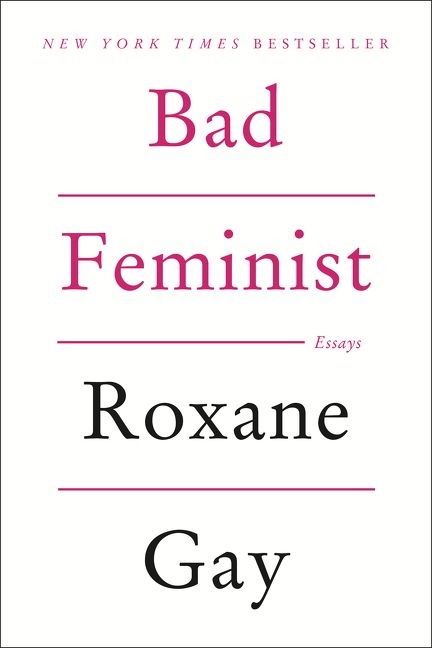 So says Roxane Gay in her essay collection, Bad Feminist (Harper Perennial, $15.99)--and Gay, along with fellow essayists Lindy West and Julia Serano, are excellent examples of writers exploring feminism and femininity in new and innovative ways.
So says Roxane Gay in her essay collection, Bad Feminist (Harper Perennial, $15.99)--and Gay, along with fellow essayists Lindy West and Julia Serano, are excellent examples of writers exploring feminism and femininity in new and innovative ways.
In her brutally honest and open essays, which vary in both subject and tone, Gay lays out her examples of feminism (albeit sometimes "bad feminism"). She writes about competitive Scrabble tournaments, body image, rape culture, 50 Shades of Grey and seemingly everything in between. She speaks to her experience with misogyny, and racism, and body shaming and to her love of pop culture even when it may embody some or all of these problematic issues.  Lindy West covers many similar topics in Shrill: Notes from a Loud Woman (Hachette, $16). West's collection is slightly more laugh-out-loud funny than Gay's, but the subjects are just as serious. West writes with humor and wit about women's rights, reproductive rights and body shaming, and, like Gay, weaves in plenty of references to pop culture, movies and television throughout her work. Be prepared to laugh along with West, but be equally prepared to be moved by her stories.
Lindy West covers many similar topics in Shrill: Notes from a Loud Woman (Hachette, $16). West's collection is slightly more laugh-out-loud funny than Gay's, but the subjects are just as serious. West writes with humor and wit about women's rights, reproductive rights and body shaming, and, like Gay, weaves in plenty of references to pop culture, movies and television throughout her work. Be prepared to laugh along with West, but be equally prepared to be moved by her stories. Julia Serano draws on her own experience as a trans woman to explore themes of sexism, femininity and trans rights in her book, Whipping Girl: A Transsexual Woman on Sexism and the Scapegoating of Femininity (Seal Press, $20). Serano moves fluidly between the personal and the academic in her writing, with her personal experiences both pre- and post-transition coloring her academic accounts of gendered and trans experience, and her academic research supporting her personal anecdotes.
Julia Serano draws on her own experience as a trans woman to explore themes of sexism, femininity and trans rights in her book, Whipping Girl: A Transsexual Woman on Sexism and the Scapegoating of Femininity (Seal Press, $20). Serano moves fluidly between the personal and the academic in her writing, with her personal experiences both pre- and post-transition coloring her academic accounts of gendered and trans experience, and her academic research supporting her personal anecdotes.
By acknowledging the injustices and imbalances in our culture, all three of these women are using their own experiences to push us all, as a whole, to do better moving forward. "We're all building our world, right now, in real time," writes West. "Let's build it better." --Kerry McHugh, blogger at Entomology of a Bookworm
The Book of Formation
by Ross Simonini
The cult of personality embedded in modern society forms the core of The Book of Formation by Ross Simonini, a striking debut novel that begs to be reread as soon as it is finished. When a journalist is granted access to Mayah Isle, a celebrity "lifestyle therapist," and her adopted son Masha, he embarks on a 20-year series of interviews that reveal the moral and existential tensions of those "made to be the object of adoration."
Mayah's personality movement encourages both ordinary and extraordinary people to change their personalities and unlearn the "prejudice of identity." This change is a psychologically and physically demanding process, and the "turns" are dramatic and televised. Masha as a child is an enigma; his interviews are cryptic, and he seems to speak in symbols and linguistic riddles. The grooming he experiences (transformative or abusive, depending on who is asked) to enter the movement takes years. After his turn, he becomes Marshall, an articulate, charismatic figure on a meteoric rise. His ability to "liquefy his personality and move it like a river" sets in motion the kind of fanaticism that is increasingly intense and ultimately dangerous.
Simonini sharply satirizes society's fascination with celebrities, including the cycle of worship and then disillusionment that inevitably results in "a constant state of being born and dying, endlessly perfecting [one]self." The novel is an unsettling and stimulating debate on the meaning of personality and the nature of self. --Cindy Pauldine, bookseller, the river's end bookstore, Oswego, N.Y.
Discover: The Book of Formation is a thought-provoking, biting debut novel skewering the public's fascination with celebrities.
Mystery & Thriller
The Woman in the Camphor Trunk
by Jennifer Kincheloe
"Anna Blanc was the most beautiful woman ever to barrel down Long Beach Strand with the severed head of a Chinese man." That killer line opens Jennifer Kincheloe's The Woman in the Camphor Trunk, the follow-up to 2016's The Secret Life of Anna Blanc, and aptly sets the tone for a novel that's madcap and grisly and moves at a fast clip.
It's Los Angeles, 1908. After her escapades in the first book, Anna has been disowned by her wealthy father, is living at a boardinghouse and works as an assistant police matron for the LAPD. The severed head leads her to Chinatown, where tensions are rising between two gangs and threatening to erupt into all-out war.
It doesn't help when Anna and Detective Joe Singer, the man she insists she doesn't love, discover a corpse--a whole one this time--stuffed in a trunk. The biggest problem? The female victim is white and the trunk is in the apartment of a Chinese man, who has disappeared. Fearing a repeat of the racially motivated Chinatown massacre of 1871, Anna and Joe must find the killer before news gets out and white locals storm Chinatown to avenge the woman's death.
Anna remains a delightful combination of smarts and feistiness. Kincheloe neatly captures her essence in lines such as: "Anna's apartment building catered to single ladies of good reputation. Thus, Anna had to pay extra." Humor aside, the novel delves into ugly topics still relevant today, like sexual slavery and racism. While making readers chuckle, Kincheloe also makes them think. --Elyse Dinh-McCrillis, blogger at Pop Culture Nerd
Discover: Using brains, beauty and resourcefulness, Anna Blanc investigates deaths in L.A.'s Chinatown in 1908.
Science Fiction & Fantasy
Ice
by Anna Kavan
Imagine a post-apocalyptic world beset by twin catastrophes. Nations and totalitarian leaders are at war with each other, while an environmental disaster looms in the form of "icy giant battalions, marching in relentless order across the world, crushing, obliterating, destroying everything in their path." Yet the story centers on the pursuit of an elusive "glass girl."
In Ice, first published in 1967, Anna Kavan creates a world on the brink of destruction. The glass girl, fragile but resilient, is held captive by her husband, the Warden, who takes advantage of the worldwide political disarray. She is also the obsession of the novel's unnamed narrator, traveling the world in pursuit of the girl who is "a shimmer among the ruins." Fighting demons of his own, the narrator is tormented by haunting scenarios of the girl's death. Kavan's precise prose, interspersed with hallucinatory episodes, is so artfully composed it leaves readers at the mercy of the author as Ice embarks on a feverish journey shrouded in impending doom.
It's impossible to ignore the impact that Kavan's personal life--two failed marriages, multiple suicide attempts, mental illness and a decades-long addiction to heroin--had on her fiction. Among her body of work, Ice stands out; a singular piece of science fiction (or slipstream, or literary fiction--it's up for debate) streaked with existential angst. Kavan achieved recognition for the last novel published in her lifetime, and it's time readers rediscover Ice, somewhat forgotten but more relevant than ever. --Frank Brasile, librarian
Discover: Prescient and enigmatic, the 50th-anniversary edition of Ice reintroduces readers to Anna Kavan's vision of the end of the world.
Graphic Books
Cartoon County: My Father and His Friends in the Age of Make-Believe
by Cullen Murphy
Cullen Murphy (God's Jury) did not have the traditional childhood growing up in Fairfield County, Conn., in the 1950s and 1960s. "Normal" for Murphy consisted of coming home from school with his seven siblings to find a father (who trained with and posed for Norman Rockwell Saturday Evening Post portraits) drawing pictures and watching TV all day. It meant taking Polaroid selfies of family members in various costumes and poses as inspiration for future comic strips or other artistic ventures. And it was hobnobbing with the brotherhood of artists and kings of the Sunday funnies collectively known as the Connecticut School--Jerry Dumas (Sam & Silo), Curt Swan (Superman), Mort Walker (Beetle Bailey) and Stan Drake (The Heart of Juliet Jones)--at dinner parties or in casual conversation.
In fact, the artists who called Fairfield County home were pivotal in advancing the art and business of the comic strip, and Cartoon County is Murphy's homage to these giants of the American Century and a loving tribute to his father, John Cullen Murphy. The co-creator of Big Ben Bolt and artist for Prince Valiant honed his skills painting portraits of General Douglas MacArthur while serving as an aide-de-camp in World War II. Through photos and personal sketches, Murphy explores the importance of the comic strip. (Readers came to rue its absence more than that of primary news in one Hearst newspaper study.) He provides insight into the multitalented artists whose wit and wisdom transformed the form into something otherworldly. Cartoon County is a revelation to comic newcomers and a nostalgic treat for those readers weaned on the Sunday funnies. --Nancy Powell, freelance writer and technical consultant
Discover: Cullen Murphy provides an insider's tour of his father's works and of the artists who popularized the modern comic strip.
Food & Wine
Moto: The Cookbook
by Homaro Cantu and Amy Stallard, photographer
Hot ice cream, synthetic champagne and nitro sushi are just a few of the feats of physics and flavor that chef Homaro Cantu served up at Moto, his Michelin-starred restaurant in Chicago, Ill. The recipes for each are featured in Moto: The Cookbook, offering 10 of the most innovative dishes from each of the restaurant's first 10 years, 2004-2013.
Though he became a celebrity, winning Iron Chef and appearing frequently on cooking shows, Cantu struggled with homelessness growing up. He was a troublemaker in school until a teacher encouraged his interest in science. Cantu built a rocket out of a two-liter bottle for a science contest, won, and was hooked: "For the first time in my life, I was good at something." He became fascinated with food next, building a career that married his dual passions.
In preparation for the opening of Moto, he writes, "Instead of looking for plates at housewares stores, I went to lab suppliers, medical distributors [and] welding shops." Moto, thus, is more a celebration of Cantu's culinary creativity than the blueprints for a dinner party. Some recipes can be replicated at home, but others call for Class IV lasers or aerogel, a product NASA uses in satellites to collect comet dust.
Cantu died in 2015 while editing this cookbook, but his spirit imbues its vibrant pages. Reflecting on his M.C. Escher Surf and Turf, an homage to Escher's painting Sea and Sky, he writes, "Inspiration is all around us." And via Cantu's Moto, it still is. --Katie Weed, freelance writer and reviewer
Discover: The late chef of the molecular gastronomy restaurant Moto offers an exuberant, eye-catching collection of his favorite recipes from the restaurant's first decade.
Biography & Memoir
Becoming Hitler: The Making of a Nazi
by Thomas Weber
How did a shy aspiring artist become a genocidal dictator? This question has puzzled historians for seven decades, and its answer has ramifications for our understanding of radicalization in all its destructive forms. The exact process of Adolf Hitler's transformation from Viennese vagrant into hard right-wing German nationalist is more than a scholarly pursuit--it holds implications for the modern era, a fundamental lesson on how difficult socioeconomic circumstances and dangerous demagogues are cyclical disasters.
Becoming Hitler: The Making of a Nazi by Thomas Weber (Hitler's First War) chronicles the peculiarities of Hitler's transformative years. Weber, a history professor at the University of Aberdeen, argues that Hitler was not radicalized by his years in Vienna prior to World War I or even by the war itself, but rather began that process with Germany's defeat and by living in the revolutionary crucible of postwar Munich. Weber debunks Hitler's own mythologized past, which has been too often repeated by otherwise credible sources over the decades, to show that the future Fuhrer had malleable political persuasions even after the end of the war. Hitler was still serving in the army during the short-lived Bavarian Soviet Republic, neither fighting for nor against that extreme left-wing government. His convictions at this crucial moment, Weber argues, were for personal survival, an opportunism covered up by Hitler's later writing. His political ascendancy was an unlikely road that was paved as much by Hitler's burgeoning ambition as the city of Munich itself.
Becoming Hitler is both a scholarly achievement in the understanding of Hitler's life and a case study in radicalization. In the years 1918-1926, Weber finds the origin of the 20th-century's greatest evil, in detail thorough enough for history buffs while remaining accessible to wider audiences. --Tobias Mutter, freelance reviewer
Discover: A historian shows how Hitler turned from a political opportunist into a right-wing extremist during the years 1918-1926.
Alone: Lost Overboard in the Indian Ocean
by Brett Archibald
In a raging storm in the middle of the Indian Ocean, Brett Archibald leaned over the railing of the surf-charter boat he was on. Ill from severe food poisoning, dehydrated and disoriented, he blacked out, only to wake up in the sea. "I watch the boat go, a toy in the distance.... I wait, stunned, desperately treading water. My outstretched arms pull great circles in the swirling foam as I fight to take breaths between the waves." He screamed for help as he watched the boat, with his seven friends aboard, move off into the blackness, but he realized no one had seen him fall. He was alone in the water with nothing other than the T-shirt and shorts he was wearing. With no life jacket and no trash nearby to cling to, Archibald battled jellyfish, a shark, vicious seagulls, the stormy sea and his own mind, enduring 28 and a half hours before rescue crews spotted him and pulled him to safety.
Archibald has written a grip-the-edge-of-the-seat tense drama of his astonishing experience in April 2013. He details his own thoughts and events on an hour-by-hour basis, as well as those of his wife and extended family, the long-time friends he was surfing with and the captains and crews of the boats involved in the rescue effort. Readers witness the characters' metamorphosis, but particularly of Archibald, who battles inner demons, God and his will to live. His true story is courageous, enlightening and incredibly moving. --Lee E. Cart, freelance writer and book reviewer
Discover: The true story of a man who miraculously survived more than 28 hours in the ocean on his own.
History
Triumph and Disaster: Five Historical Miniatures
by Stefan Zweig, transl. by Anthea Bell
So much of history depends on random chance. A door left open, an order obeyed, a train taken can change the fate of nations, and of the entire world. Stefan Zweig's Triumph and Disaster is about five particular moments in Western history when such change occurred. These "miniatures" jump in time and place from the fall of Constantinople in 1453 to the modern era, including Lenin's arrival in Russia on a "sealed train" in 1917, and each one shows how often the difference between triumph and disaster is little more than a roll of the dice.
Triumph and Disaster is slim, and Zweig (1881-1942) shows off his considerable talent by placing the reader into the context of each miniature with speed and precision. Beginning with the Battle of Waterloo--where one overly faithful subordinate failed to provide a rearguard for Napoleon--Zweig drops into periods of history expertly to describe "a single moment that determines and establishes everything." Summing up decades of history in a short paragraph, his goal is to get to the heart of tectonic change. The result is a series of short thrill-rides, where even if the reader knows why something occurred, it's still a treat to see how Zweig raises the tension as he races to a well-known conclusion. Calling these short pieces miniatures makes them seem like a lark (especially coupled with how fast they read), but Triumph and Disaster is stellar historical writing. Even as it zips by, it fully embraces this central thesis: sometimes the greatest change comes from the most unlikely places. --Noah Cruickshank, adult engagement manager, the Field Museum, Chicago, Ill.
Discover: Triumph and Disaster charts five moments throughout history that changed the shape of the modern world.
Social Science
Dead Reckoning: How I Came to Meet the Man Who Murdered My Father
by Carys Cragg
"I have no feelings of hate, rage, or anger toward you, but rather, I have a profound need to understand who you are, and what you were doing, so I can integrate that information into my life now." Nearly 20 years after her father was murdered, Carys Cragg writes this to his killer. Such letters, exchanged over two years, are part of her process of restorative justice, which focuses more on the people affected by a crime than its legal consequences. Cragg is a youth social worker in Canada, which no doubt increases her empathy, and she's acutely aware of the differences between her childhood and that of this man's, and the advantages he lacked.
Cragg's memoir, Dead Reckoning, follows their communication and eventual meeting. As she tries to find the truth about that horrible night, she discovers unexpected parallels in their families' pain. Much of the book is made up of their letters, which is at times tedious, but the decision to include so much of them--misspellings and all--is human and brave. Interspersed between chapters are third-person flashbacks of Cragg's life with and without her dad, a respected emergency doctor. Some of these moments almost seem too perfect, like a sitcom family settling down to dinner, until they are juxtaposed with the trauma her family endured. It's not a book about forgiveness, but rather a compelling and exceptional perspective on justice, taking control over your life and the unshakeable connection between people. --Katy Hershberger, freelance writer and publicist
Discover: A woman's memoir of meeting her father's killer is a nuanced look at grief, violence and empathy.
Education
The Newcomers: Finding Refuge, Friendship, and Hope in an American Classroom
by Helen Thorpe
At South High School in Denver, Colo., Eddie Williams teaches an English Language Acquisition class for newcomers to the U.S. Many of his teenage students have survived war, displacement and other traumas before they immigrated; others are unaccompanied minors or undocumented. All of them face the challenge of not only learning English, but adjusting to life in a new culture. Journalist Helen Thorpe spent a year in Williams's class, observing and befriending the students and learning their stories. She shares their experiences and her own in her insightful, keen-eyed third book, The Newcomers.
Thorpe (Soldier Girls) delves into the complex politics of the students' home countries and sets the students' narratives against the backdrop of the global refugee crisis, the 2016 American presidential election and the fraught atmosphere surrounding immigration. But The Newcomers is far from dour. It brims with life and humor, through the personalities of the students themselves: exuberant Lisbeth, witty Saúl, shy Abigail and their classmates. Thorpe grows particularly close to Jakleen and Mariam, sisters from Iraq who came to the U.S. via Turkey, with their younger sister and mother. Throughout the school year, Thorpe traces the students' progress with compassion, touching on many facets of newcomer life: government benefits, assimilation into school and community activities, difficulties with jobs and transportation, the aching loneliness of the foreigner.
Meticulously researched, thoughtful and timely, The Newcomers provides a vital and joyous window into the lives of teenagers searching for a new home in the U.S. and asks important questions about Americans' willingness to welcome the stranger. --Katie Noah Gibson, blogger at Cakes, Tea and Dreams
Discover: Helen Thorpe tells the stories of refugee teenagers in a "newcomer" class at a Denver high school.
Children's & Young Adult
Shadow Weaver
by MarcyKate Connolly
Blessed by the Cerelia Comet with the talent of "shadow weaving," 12-year-old Emmeline has always been different. Her talent makes darkness a tool: she can shape and mold shadows into toys, animals and other objects. The only shadow Emmeline doesn't manipulate beyond a friendly touch is her own shadow, Dar, her friend and constant companion. Though Emmeline finds joy and comfort in her shadow play, those around her fear it: "they don't see how wonderful the shadows are, the beauty in the darkness, not like I do."
When a visiting nobleman offers to take Emmeline away and cure her of her shadow magic, Emmeline and Dar are troubled by her parents' agreement. Dar offers an unexpected bargain of her own: she'll make sure the man doesn't take Emmeline if Emmeline promises to enact a ritual that will free Dar from her shadow form--and make her human. The next morning, the nobleman is found in a coma, and a witness saw "a long shadow with no one nearby to cast it." Emmeline fears Dar may be the culprit, but pushes aside her suspicions and flees with Dar. Their unexpected journey brings Emmeline to Lucas, a boy who can work magic with light the way Emmeline can direct shadows. Trusting Lucas will mean taking a big chance, but mostly Emmeline wonders if she can truly trust Dar.
The first in a duology from MarcyKate Connolly (Monstrous; Ravenous), Shadow Weaver is a spooky thriller filled with danger and magic. In Emmeline's world, those with talents are rare and their abilities are not always respected or admired--"over the years, people have grown more resentful" of those blessed by the comet. The later introduction of Lucas and his family provides a wonderful contrast to Emmeline's shadowcraft, and the challenge presented to Emmeline when she meets Lucas's family, who "live in the light, while all I've ever known is shadows," is significant. Shadow Weaver is a fresh take on magic and friendship not to be missed. --Kyla Paterno, former children's and YA book buyer
Discover: A young girl with magical talent goes on the run after a nobleman is injured, possibly by her shadow.
Dear Girl
by Paris Rosenthal and Amy Krouse Rosenthal, illus. by Holly Hatam
Beloved children's author Amy Kraus Rosenthal and her daughter, Paris, offer young readers plenty of uplifting, empowering advice in the form of a series of letters shared by a mom to her "Dear Girl." They tell readers to "[k]eep that arm raised! You have smart things to say!" and "[i]f your instinct is telling you to say no, say no, you know?" The message to young girls is clear: be bold and find your own way.
These timeless bits of wisdom encourage all kids to celebrate what makes them distinctive, from freckles to birthmarks to hair color. Girls are advised to accept a wide range of feelings, whether they need "a good cry" or a friend or a moment to dance. And, just as importantly, the letters promote taking time to experience the wonder of rainbows, crazy handshakes and coloring outside the lines.
Holly Hatam's art is lighthearted and energetic, with a variety of textures and techniques employed to demonstrate pointers that are both practical and full of whimsy. Amy Kraus Rosenthal died in 2017, but this collection is no weepy farewell. Adults may realize how bittersweet it is for the book to end "Most of all, dear girl who I love, know that you can always always always... turn to me." But readers of any age will want to return again and again because, as the authors advise, "Whenever you need an encouraging boost, remember you can turn to any page in this book." --Lynn Becker, blogger and host of Book Talk, a monthly online discussion of children's books for SCBWI
Discover: Letters from a mom to a young girl emphasize empowerment and self-acceptance.
| Advertisement nuremberg--now playing in theaters |


